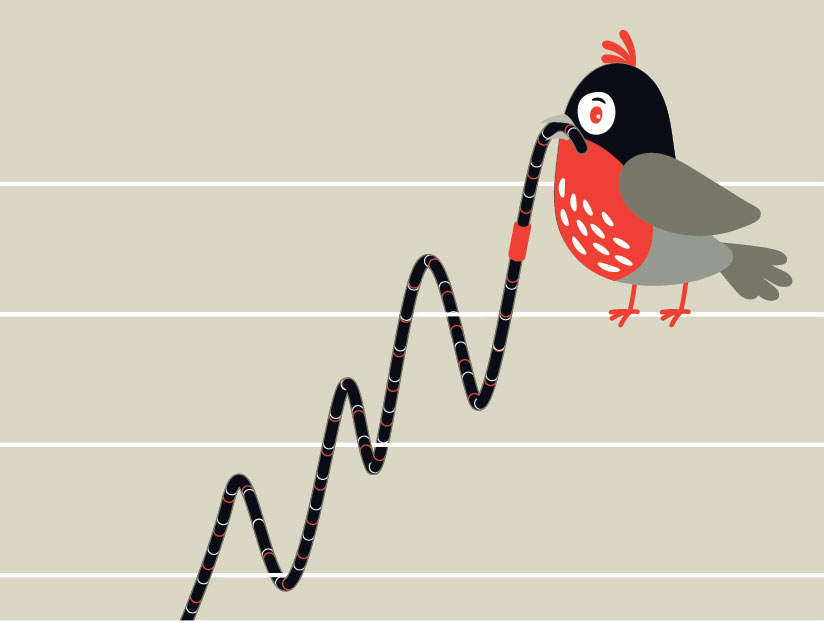
This article appears in the 2023 ETF Guide issue of Investment Executive. Subscribe to the print edition, read the digital edition or read the articles online.
What a difference a day makes.
Purpose Investments Inc. launched the Purpose Bitcoin ETF, the world’s first spot bitcoin ETF, on Feb. 18, 2021. The following day, Evolve Funds Group Inc. launched its own bitcoin ETF.
The similar timing, however, did not lead to similar investor appetite.
Purpose accumulated $1 billion in assets under management (AUM) in its first month. After a year, its $1.4 billion in AUM represented 29% market share, and the fund boasted an average daily trading volume of $56 million, according to a report from TD Securities Inc.
The Evolve Bitcoin ETF gathered $96 million in its first year, even though Evolve slashed the management fee to 0.75% shortly after launch, undercutting Purpose by 25 basis points.
Meanwhile, the CI Galaxy Bitcoin ETF, which launched only three weeks later with a management fee of 0.40%, had $456 million in AUM after one year.
Frédéric Viger, managing director and co-head of institutional sales – ETFs with National Bank Financial Inc., said first movers benefit from their head start, but “network and marketing effects” also play a part in a product’s success.
In March, National Bank Financial published an analysis of 23 Canadian ETFs tracking nine indexes, attempting to explain first-mover advantage. The study, led by Patrick McEntyre, managing director and co-head of institutional sales – ETFs, compared index funds launched since 2002.
The study found that first movers garnered 55% of the total AUM tracking a particular index. First movers also generally had higher management fees than funds that launched later. So, certain first movers managed to maintain dominance even though their ETFs were more expensive and their competitors tracked the same index.
The National Bank study distinguished between two investor types: short-term traders, who are primarily concerned with ETF liquidity and are willing to pay slightly more to access that liquidity; and long-term for whom fees matter most.
An issuer of a first-mover ETF often courts short-term traders, who are less price-sensitive. Competitors then launch similar funds, generally with lower management fees, and a price war begins, the study found.
The first-mover issuer may not need to enter that price war if it can retain the short-term traders through superior liquidity. And investors who hold the ETF may wish to avoid selling just to save a few basis points because they could incur taxable capital gains or transaction costs, National Bank stated.
But if the first-mover issuer does not attract enough traders, loses assets to competitors and determines that lowering fees is more cost-effective, it may enter the price war. This continues until the management fees level off among all fund issuers. However, this levelling off does not necessarily mean that the first mover will lose dominance.
Viger said first-mover advantage is evident in certain asset categories, such as cryptocurrencies, single-stock ETFs and thematic ETFs, but less so with ESG funds. “Because cash flow is so important, if another issuer enters with an appealing proposition, we’ve seen first movers lose their lead,” he said.
Daniel Straus, director of ETFs and financial products research with National Bank Financial, said there have been cases in thematic sectors, such as robotics and aerospace, where first movers have been dethroned.
He pointed to U.S.-domiciled emerging market funds, where the first-moving iShares MSCI Emerging Markets ETF (EEM), launched in 2003, has US$21 billion in AUM and has traded since 2003. This dominance did not prevent the Vanguard FTSE Emerging Markets Index ETF (VWO), which launched in 2005, from taking the lead. “It took five years for VWO to overtake EEM,” Straus said. VWO now has approximately US$72 billion in AUM.
Keeping an eye on first movers
Should investors favour first-to-market ETFs? A competing ETF issuer may offer lower fees but could also have a greater bid/ask spread due to fewer transactions, less liquidity and increased risk of premature dissolution.
Favouring a first-mover ETF “can offer certain advantages, but it’s not a sine qua non condition” for an investor’s financial success, said Fred Demers, director of multi-asset solutions with BMO Global Asset Management. “Liquidity is an important issue,” he said. “Smaller players can introduce attractive products but with less liquidity — not to mention the fact that liquidity often goes hand in hand with more transparency.”
Viger also advised caution, but he emphasized that “the liquidity of an ETF is not necessarily the same as what we see in the markets, but that of the underlying stocks that make up the ETF. Even if an ETF has lower [trading] volume, the intrinsic liquidity of an ETF is based on the securities that make it up.”
First-mover status is not necessarily correlated with a fund’s longevity either. “You can be a first mover, but if you don’t acquire enough assets, you’re at greater risk of closure than a follower who gathers more funds,” Viger said.
As a result, the questions to ask when choosing an ETF should be more fundamental: Is this a long-term or tactical investment? Are fees more important than liquidity? Does the ETF adequately cover the sector of interest? Is it at risk of premature closure? Are the underlying securities liquid?
A first mover certainly deserves consideration, given the likelihood that it can meet an investor’s requirements. However, this is not always the case.